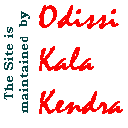|
|
|
 |
Lord of Dance |
|||
|
Religious beliefs convey a society's highest values and its understanding of the origin, purpose, and destiny of human life. As a basic form of human expression, dance, in varying degrees, is an important part of all religions. In Yoruba and Hindu religions, dance plays a central role in the expression of religious beliefs. A dancer can be possessed by a deity. Dance is therefore a means of sacred communication. In many denominations of Christianity, dance in worship has been modified or eliminated but has maintained a strong presence in the secular realm, as in theater and social dance. In Christianity sacred communication is achieved through prayer and communion, which can be seen as a ritualized dance. Many religions utilize ritual gestures, which are evident in prayers, ceremonies, offerings, and adorations. Events such as birth celebrations, coming-of-age ceremonies, marriage, and death also involve ritual, which may be given sacred meaning and may be carried out in a sacred space. In the Yoruba religion worshippers communicate with gods and ancestors through words, drumming, and dance. Some ceremonies have been designed to induce possession, with the body of the worshipper providing the vehicle through which a god can visit Earth. These communal gatherings involve drumming, dancing, and the chanting of songs, called Oriki, which are addressed to specific deities. In the Yoruba religion there are more than 400 deities, or Orishas, representing deified ancestors, such as Sango, a former king who wields a dangerous lightning bolt, and personified natural forces such as Osun, a river goddess. The Hindu religion, which has developed over two thousand years, embraces many sects whose approaches to worship vary in both the form and the object of their devotion. Two dance forms, Ottan Tullal and Bharata Natyam, exemplify the ways in which religion, dance, and theater are all one in Indian life. Bharata Natyam is a highly codified dance performed traditionally by a single female dancer. Its origins can be traced to devotional dances once done in Hindu temples. The origins of Ottan Tullal (meaning running and jumping) can be traced to the ancient tradition of storytellers who presented Sanskrit epics as temple offerings. The popular form, in which a solo artist dances, sings, and enacts an entire play without a formal stage, props, or curtain, is now performed in any available indoor or outdoor space. The reluctance of early Christians to include dance in religious ceremonies can be traced to their desire to distinguish their religion from pagan religions in which dance played a major role. Banned from the sanctity of the church, traditional dances were nevertheless able to live outside its authority. Although ritualized and dancelike movements have been performed in Christian worship throughout the centuries, they most often have been characterized by carefully controlled, prescribed steps. As Christianity spread to many cultures and countries, local dance traditions often became part of the religious ceremony or went outside the church and survived as folk or national dances. |
|||